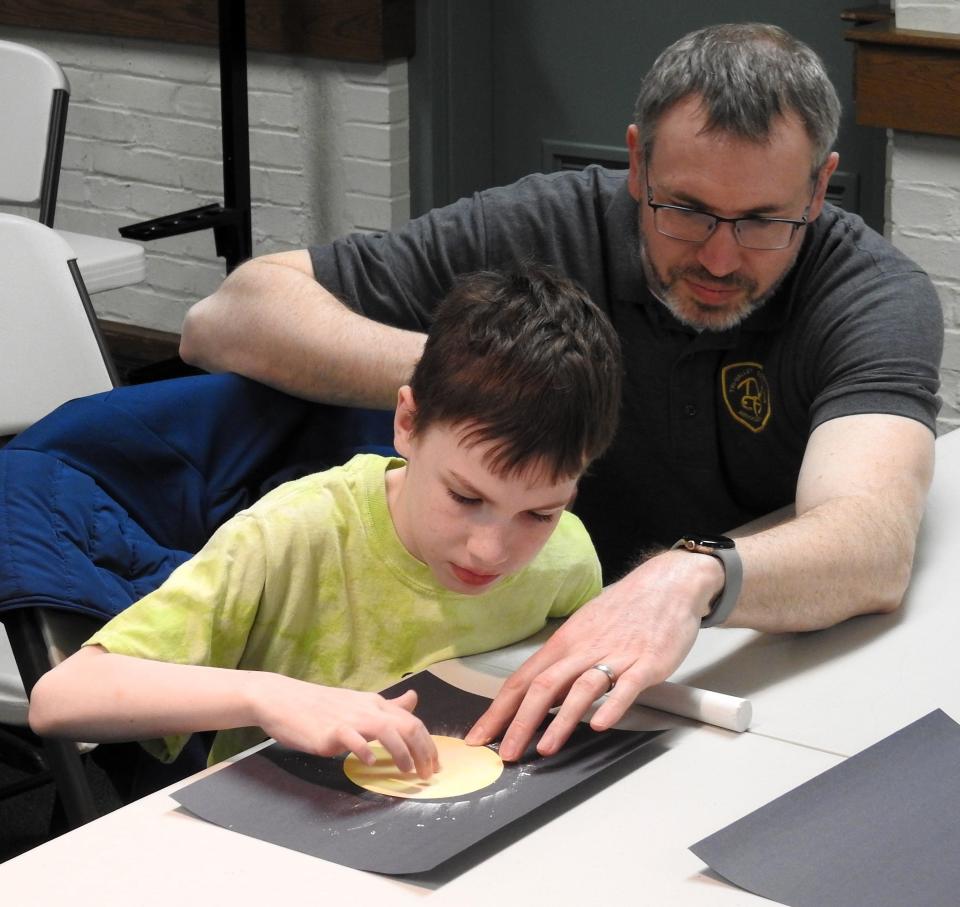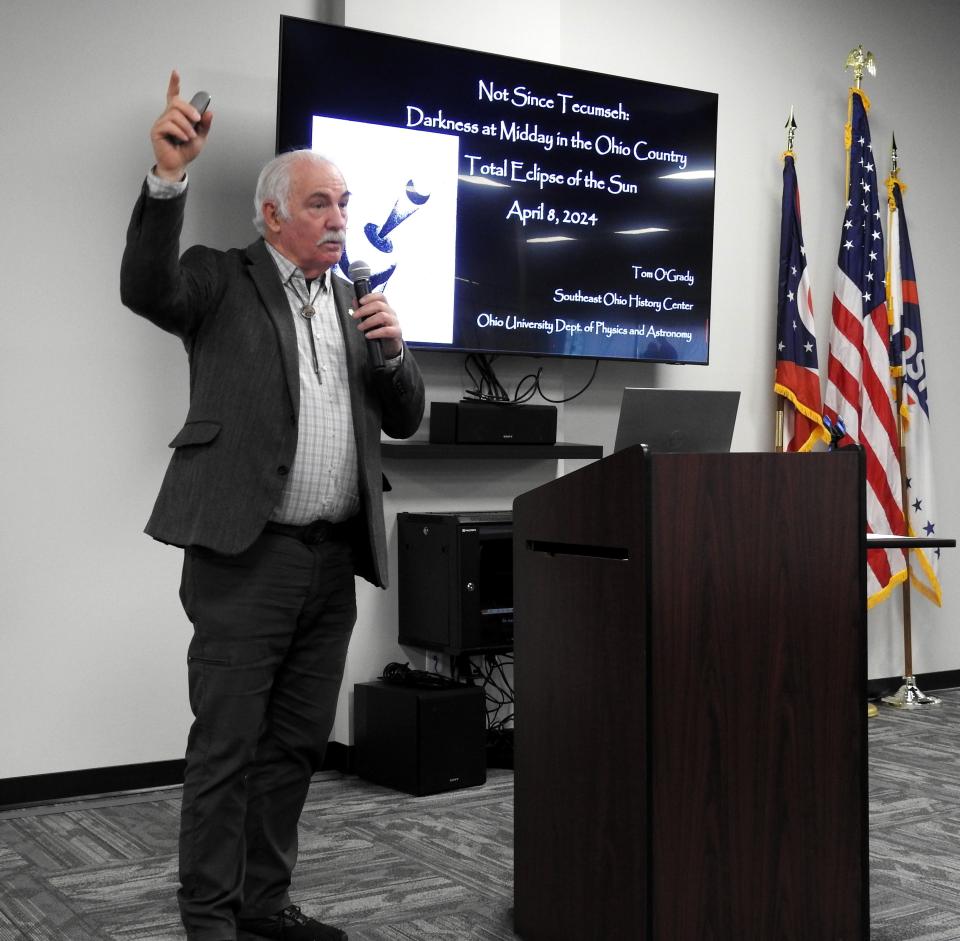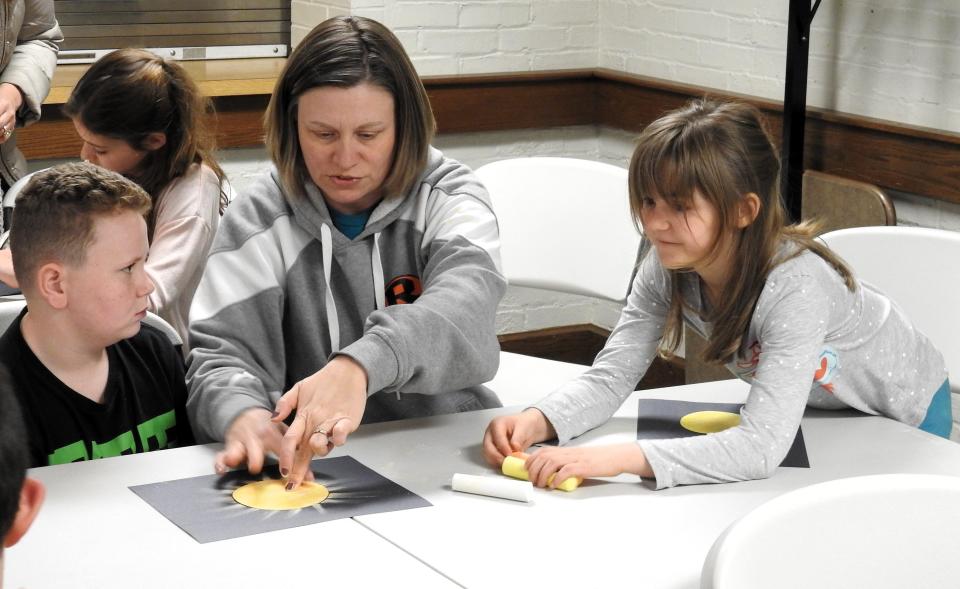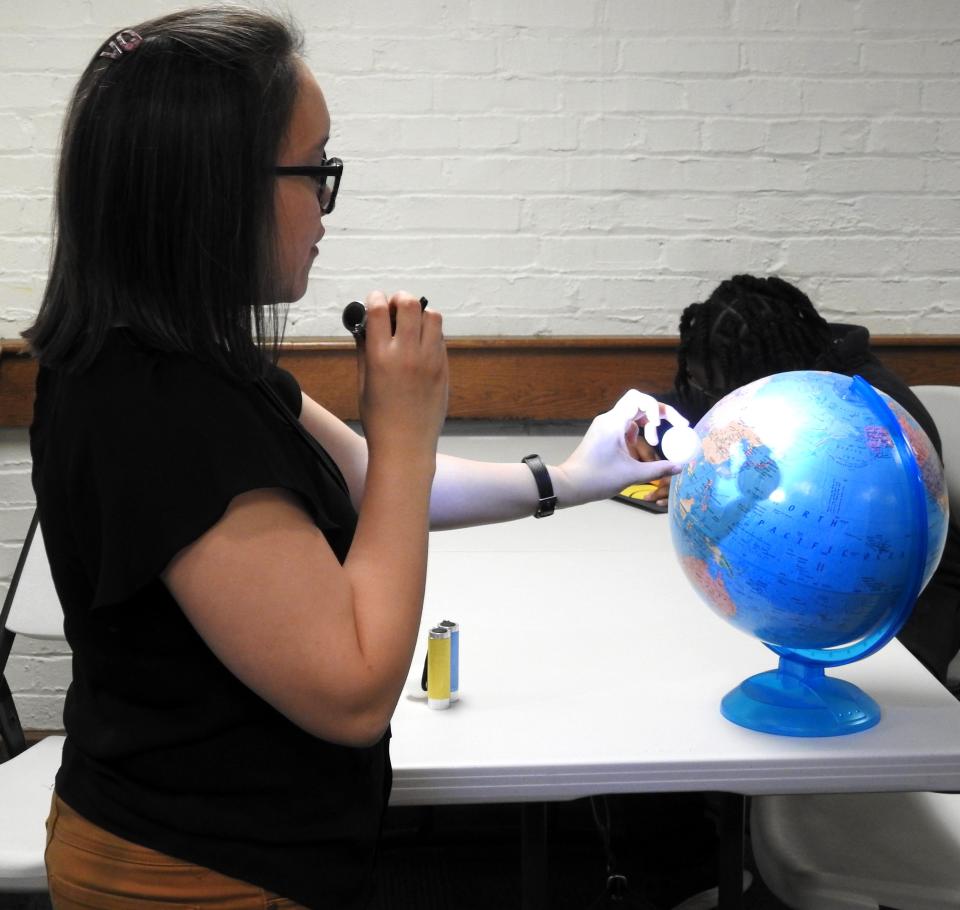Eclipse history: Tom O'Grady of Observational Astronomy shares tale of historical event
- Oops!Something went wrong.Please try again later.
COSHOCTON − Even though Coshocton County will be just outside the path of totality, many people locally will be looking to the sky on Monday to see the solar eclipse.
The partial eclipse will begin in Coshocton County at 1:57 p.m. and end at 4:28 p.m. Maximum eclipse will be at 3:14 p.m. and in the 98% to 99% range of totality. It will last for about 3 minutes.

Anyone looking up at the eclipse, even from inside a motor vehicle or house through a window, will need certified solar viewing glasses. Glasses are available for purchase online and at many local stores. They are also free through some outlets, such as the Coshocton County District Library.
The library has held several eclipse related programs over the past month to ready residents for the event. This has included children's and adult programs on the science of eclipses, general information sessions at the main library and branch in West Lafayette and a historical retrospective of eclipses, including the last total solar eclipse seen in Ohio.

Not since Tecumseh
The last total solar eclipse in Ohio was in 1806. Tom O'Grady, instructor of Observational Astronomy at Ohio University, said details are scarce, but there is a long told tale relating that eclipse to the famed Native American Chief Tecumseh.
Then future President William Henry Harrison was governor of the Indiana Territory at the time and was isolating different tribal leaders and buying their land. Tecumseh was trying to unite the tribes of the area to prevent the loss of more native land. Despite his success, Harrsion was feeling threatened by Tecumseh and his brother Tenskwatawa, or The Prophet, who had prophetic visions and dreams.
Harrison issued a statement that if Tenskwatawa was really a prophet he should do something to demonstrate his powers, like making the sun stand still in the sky or the rivers to stop flowing. O'Grady said even back then, people could predict when eclipses would happen and Tecumseh found out about one upcoming.
Tenskwatawa made an announcement that in 50 days the hand of the Great Spirit would hide the sun. After it happened, Tecumseh commanded the Great Spirit to release the sun.
O'Grady said even though scientists were tracking eclipses, the average person still didn't know about it.
"Fifty days later when that happened, why would you doubt anything that guy had to say again? This wasn't on the six o'clock news," O'Grady said of Native American reaction to the event. "They got a little street cred, you might say, for calling that one 50 days out."

Children learn about the eclipse
Spanish astronomer José Joaquín de Ferrer traveled to the U.S. to view the 1806 eclipse. He later coined the term corona, or Spanish for crown, for the most outside layer of the sun's atmosphere, which can be seen during a solar eclipse. He made a sketch of it from his observations.
During a recent children's program at the Coshocton County District Library, children made their own sketches by drawing with chalk on a circle and then spreading it out with their fingers on a piece of black construction paper.
"We always don't get to see that because it's so light, but in complete darkness it's one of the few times we get to see that," Youth Services Librarian Corazon Britton told the kids.

Another activity was using a flashlight to shine a light on a ping pong ball in front of a globe. The shadow produced replicated an eclipse and showed how narrow the band could be.
Britton encouraged the youth to be safe and not view the sun without proper cover. For those who wear glasses, they should put their eclipse glasses on over their regular glasses.
"Whether there is an eclipse or not, we know not to look up at the sun. It could cause damage to our eyes and we always want to be safe as possible," she said.
Leonard Hayhurst is a community content coordinator and general news reporter for the Coshocton Tribune with more than 15 years of local journalism experience and multiple awards from the Ohio Associated Press. He can be reached at 740-295-3417 or llhayhur@coshoctontribune.com. Follow him on X (formerly Twitter) at @llhayhurst.
This article originally appeared on Coshocton Tribune: Eclipse history: Coshocton library program looks back at 1806 eclipse

